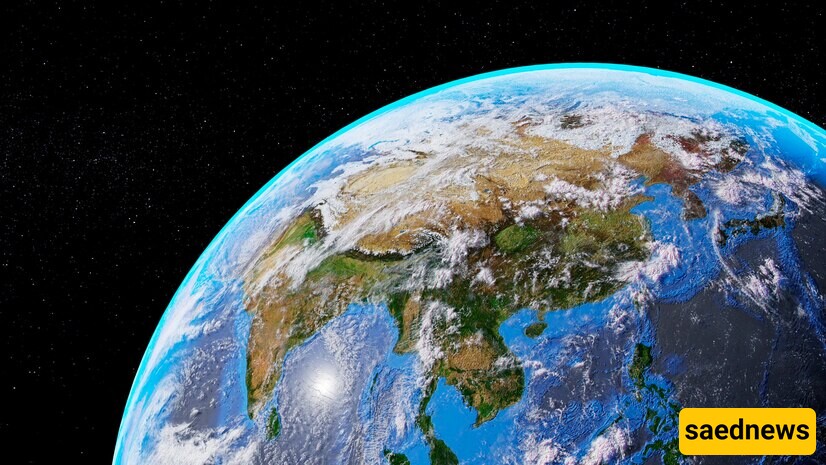SAEDNEWS: Earth, the planet that is our home, has passed more than 4.5 billion years of its existence. But have you ever wondered how much longer Earth will continue to support life and what fate awaits it? From cosmic changes to human threats, the destiny of Earth is a mysterious and fascinating topic.

According to SAEDNEWS, Earth, the cradle of life in the solar system, has witnessed many transformations since its formation. Over billions of years, this planet has turned from a disk of gas and cosmic dust into a habitat for millions of living species. However, like everything else in the universe, Earth has a limited lifespan and will eventually come to an end. In this article, we scientifically examine the age of Earth and how it may eventually be destroyed. Will the Sun bring an end to Earth? Or perhaps a collision with celestial bodies? Stay with us as we explore these questions.

Age of the Earth
The Earth formed approximately 4.54 billion years ago. This figure has been determined using precise methods such as radioactive dating of isotopes in rocks and meteorites. This process shows that Earth has evolved over billions of years since it first formed as a gaseous-dust disk in the solar system.
How Will the Earth Be Destroyed?
The future destruction of Earth depends on natural and cosmic factors. Several scientific scenarios for the end of Earth are discussed below:
Red Giant Phase:
The Sun, the primary source of Earth's energy, will enter a phase called the "Red Giant" in about 5 billion years. During this phase, the Sun will gradually become larger and hotter, potentially engulfing Earth's orbit. As a result, Earth will heat up intensely, causing all water to evaporate and transforming the planet into a dry, uninhabitable surface.
Death of the Sun:
After the Red Giant phase, the Sun will become a white dwarf. In this state, Earth will turn into a frozen, lifeless planet.
Meteoroids and Asteroids:
Although the likelihood of a massive asteroid collision, like the one that caused the extinction of dinosaurs, is low, such an event remains a potential threat to Earth over long time scales.
Collision with Another Planet or Star:
Over billions of years, gravitational changes might cause Earth to collide with other celestial bodies.
Even before the Sun dies, Earth's habitability might be lost due to the following reasons:
Reduction of Carbon Dioxide:
In the next few hundred million years, natural processes might reduce atmospheric carbon dioxide levels to a point where photosynthesis becomes impossible. This will lead to the extinction of plant life and eventually the collapse of the food chain.
Global Warming and Ocean Evaporation:
With the Sun's gradual temperature increase, Earth's oceans may evaporate, creating conditions similar to those on Venus.
While human activities are not a threat on a cosmic scale, they could disrupt life on Earth in the short term:
Climate Change
Depletion of Natural Resources
Widespread Environmental Pollution
These factors could significantly impact human life and other living organisms long before Earth's natural destruction.
Earth's lifespan will continue for billions of years, but its habitability may end much earlier. The ultimate destruction of Earth is inevitable, but this process will occur over an extended period. On a cosmic scale, it is part of the natural cycle of the solar system.

